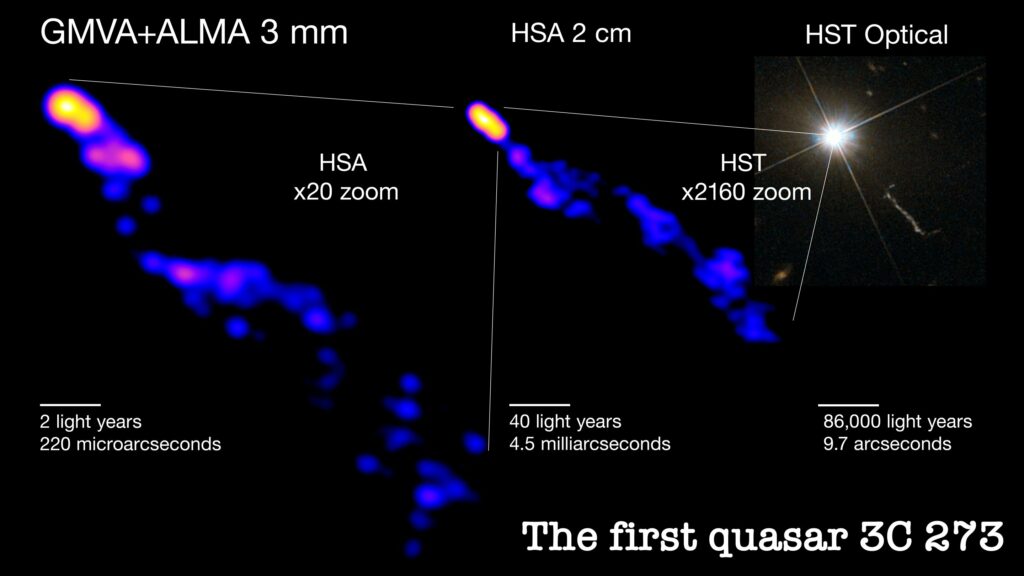For the first time, an international team of astronomers observed the narrowing of a quasar jet. For this, the researchers used a network of radio telescopes located in different parts of the Earth.

We know that there are supermassive black holes in the center of almost every galaxy. Sometimes they absorb a very significant amount of gas, which is accompanied by the release of a huge amount of energy. This phenomenon is called a quasar.
Quasars emit narrow collimated (collimation is the process of creating a thin parallel radiation stream using slits) jets of matter at a speed close to the speed of light. However, how and where quasar jets collimate remained a mystery for a long time.
To answer this question, an international team of astronomers used the GMVA, ALMA and HSA radio telescope complexes. They managed to get the most up-to-date image of the jet. It is emitted by the quasar 3C 273, located at a distance of 2.4 billion light-years from Earth.
It turns out that the jet narrows at a very large distance from the quasar. This part of it extends incredibly far beyond the region where the gravity of a supermassive black hole prevails. According to the researchers, the structure of the jet is similar to the jets that originate from the centers of neighboring galaxies that do not show high brightness. This suggests that the narrowing of jets does not depend on the level of activity of black holes, which gives an important clue to their structure.
Earlier we wrote about how an intermediate-mass black hole tore apart a star.
According to https://phys.org
Follow us on Twitter to get the most interesting space news in time
https://twitter.com/ust_magazine

